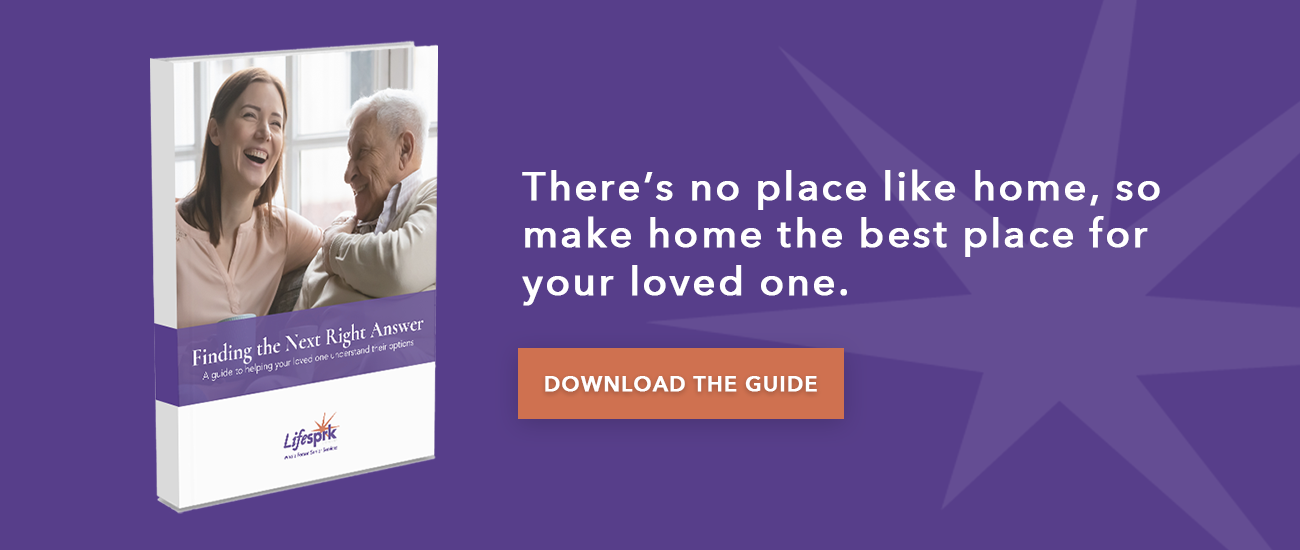
Long after my sisters and I left home, my mom decided it was time to upsize. That’s right, upsize to a bigger house, adding on a porch, deck, and a room over the garage. Mom had always wanted a dream home, and after raising three kids in a tiny house with just one bathroom, she got it.
My parents loved that house—three bathrooms, large bay windows, spacious living room, and so much extra storage. My dad filled his home office with even more books, record albums, and CDs. My mom spent entire weekends outside, raking, weeding and planting. Together, they hosted brunches, dinner parties, celebrations, and the annual family Thanksgiving feast. The house was a perfect fit.
End of a relationship
At the ten-year mark, my sisters and I started to worry. Dad had never been exactly spry, but now he couldn’t make it upstairs without stopping to catch his breath. Mom’s second hip replacement hadn’t healed properly, so every step sent spasms up her leg. We moved their bed downstairs, but there was no place for their clothes. They couldn’t enjoy the living room because it was a step down from the main level, and the basement laundry room might as well have been in Middle Earth. And then there was the transportation issue: cabs couldn’t find their house (neither could Google Maps), so they depended on family and friends to shuttle them around.
Something had to change. Was it time to end the relationship with their home?
“You might still love your house, but it may be time to shift goals when it doesn’t love you back,” said Dr. Bill Thomas, Lifespark Independence Officer and a nationally renowned geriatrician. “It’s trouble when you’re involved in a relationship that’s one-sided.” He also cautioned older adults to not confuse their life journey with their house. “You may have shared a journey together, but that house is just a chapter,” he said.
Finding the next right decision
In the United States, most older homes were designed for raising a family, with no thought to how they might work for older individuals. In fact, a 2019 report by the Joint Center for Housing Studies of Harvard University found that only 3.5 percent of housing units in the U.S. had single-floor living, no-step entry, and extra-wide hallways and doors that could accommodate a wheelchair.
“You should be living in a place that fits you now,” Dr. Thomas said. “When you were in your 20s, and that funky apartment no longer fit—the one with the shower in the kitchen, the loft bed just inches from the ceiling, and roommates who never washed their dishes—you found the next right place.”
That’s what happened with my parents. We brought up the idea of retrofitting the house to meet their needs, but between the astronomical costs and the transportation issue, it just wasn’t practical. So, with some prodding from their primary care physician, they ultimately decided to move into an independent-assisted living community. My dad took to it immediately, but my mom had a hard time adjusting, in part because her identity was so connected to that house and what it had represented. She wasn’t able to see how it was endangering her independence, social network, and happiness.
Our role as adult children
As adult daughters and sons, it’s not always clear what our role and responsibilities are with these decisions. According to Dr. Thomas, we can be most helpful to our aging parents when we present what each option might mean for their future independence—without trying to lead them in one direction or another.
“Our whole life has been a series of searching for the next right answer,” he said. “There’s nothing special about this question or this decision. It has to be the right answer for them—not for their younger relatives.”
Tool to guide the discussion
To help your parents think through this decision, Lifespark created a tool called Finding the Next Right Answer: A guide to helping your loved one understand their options. It focuses on three key themes to help older adults gain perspective about their situation:
-
- Does the house still fit your life?
- How do you want to spend your time and energy?
- Is the cost of staying in your house worth it?



